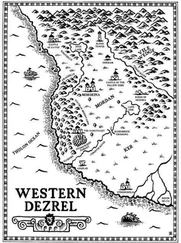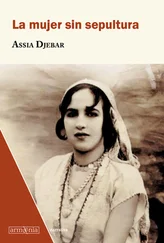First in Constantine, then after having been driven from his city, the bey Ahmed keeps up a political and military correspondence using this script, whereas, the majority of the population at that time — in the middle of the nineteenth century — have almost entirely lost the ancient alphabet. The resisting leader uses it to write dangerous things, actually to ward off danger!
He will surrender in 1847, a year after the emir Abd el-Kader. There is no mention of the language in which he signs his surrender; moreover, did he sign anything at all on this occasion? In 1830, when the dey of Algiers, without really putting up a fight, writes his capitulation, it is in Turkish — the official language of the time — that he hands himself over to the invader.
After the defeat of the bey Ahmed, the Tuaregs will remain free for seventy more years. As if the ancestral writing, maintained outside of any state of submission, went hand in hand with the intractability and mobility of a people who, in a gesture of supreme elegance, let their women preserve the writing while their men wage war in the sun or dance before the fires at night …
Finally then, Célestin Judas, returning to the inscriptions that English travelers brought back from the Fezzan and Cyrenaica, and aware of de Saulcy’s intuitions, sees the solution — clear as day: Whether Libyan or Berber, for thousands of years this has been the same writing with a few variations: ancient and neo-Libyan.
This is the 1850s. It is during this period that Gustave Flaubert visits Constantine and mentions the grandson of Salah Bey, as well as his French superior, Captain Boissonnet, who is in correspondence with de Saulcy. Boissonnet has a highly valued informant, el Hadj Abd el-Kader, the secretary of the sheik of Touggourt, who traveled in the past with nomad caravanners. Boissonnet gets “a small example of tifinagh writing” from el-Kader and sends it to the orientalist in Paris. “I was struck by the similarity between these written characters and the ones on the Libyan inscription from Dougga,” he says in conclusion.
Of course, this informant has not visited his country for six or seven years, so his memory must not be completely reliable. Captain Boissonnet manages to convince him to resume his contacts with the nomads, maybe even to undertake another trip himself — his seventeenth! — to the Touat.
Will el Hadj Abd el-Kader of Touggourt risk such a thing? The fact remains that, the next year, he sends Captain Boissonnet of Constantine a second list, this time more complete, of the signs currently in use among the Veiled Men.
Once again Célestin Judas provides a meticulous account, comparing the signs on the stele from Dougga, the characters brought back by the Englishmen from Cyrenaica, and those sent to Paris by the captain in Constantine. The same signs are on the stone and on the rocks of the Fezzan and written on their camels’ flanks by Tuareg warriors.
It is 1857—just before the English and French travelers to Dougga discover to their despair the “barbarous crime” committed by Consul Reade against the bilingual stele. But in this same moment the meaning itself — and the music and the throbbing orality — of this alphabet comes back to life, no longer stifled!
Thus, during the 1860s, the stirring course of a very ancient civilization is restored. Though its memory had, indeed, preserved the language in all its toughness and bitter-sweetness, the letters now return to their source, seek to be written again, and by everyone!
While the secret is revealed, how many women and men are there still, from the oasis of Siwa in Egypt to the Atlantic and even beyond — to the Canary Islands, how many of them — how many of us still — all singing, weeping, ululating, but also loving or rather being in a position where it is impossible to love — yes, how many of us are there who, although the heirs of the bey Ahmed, the Tuaregs and the last century and the aediles , bilingual Roman magistrates in charge of the monument of Dougga, feel exiled from their first writing?
6. THE STELE AND THE FLAMES
DOUGGA. IT IS THE SPRING of the year 138 B.C.E. The city notables are presenting, therefore, a magnificent cenotaph to commemorate the tenth anniversary of the death of the great Masinissa. After reigning sixty years as king of all Numidia, he had died at the age of ninety. It was he who made it possible for the Romans to take Carthage for the last time, conquering it completely.
It has been eight years since Hannibal’s age-old capital went up in flames after a siege lasting almost five years. What astonishing, unflagging energy and desperate resistance on the part of the Carthaginians! How amazingly the Romans pulled together following their senate’s implacable decree: “Delenda Carthago!” And in the end — those April days in 146 B.C.E.
Masinissa saw the siege begin and saw the glorious capital gradually suffocate. But before Carthage will die, consumed by tortures and fire, he dies of old age.
Masinissa died before he could see his dogged enemy vanish. His son, Micipsa, who is present at this commemoration at Dougga, witnessed the tragedy; his other son, Gulussa, with his thousands of fearless, mounted soldiers, took part in the event, but on Scipio’s side, the side of the conquerors.
When the carnage begins, Scipio Emilien (who has summoned from Rome his teacher of Greek literature, the writer Polybe, who was thus fated to be the chronicler of the fall of Carthage), this Scipio — adopted grandson of Hannibal’s rival, Scipio the Great, decides to save some part of the splendor of Carthage.
Of course, the ancient treasure taken from the Syracusans was returned to them; of course, fifty thousand survivors were spared and left as slaves; but what could he preserve of Carthage, other than its writing — its books?
Everything is burning, everything vanishes into dust and ashes: sanctuaries, palaces, the magnificent statues of Baal. In a few days the beauty and munificence of a society that has endured for seven centuries disappears.
Scipio — with his old master standing behind him — raises his hand to intervene: “Save them! Save the books!”
Then with a condescending smile he announces that he does not do this with the intention of carrying the books off to Rome! No. Romans do not care about Carthaginian heritage. Quite the contrary: they will seed the land with salt to give notice that it must become sterile.
“Save the books!” Someone who has heard what Scipio said repeats it: “Not for us, not for us to carry off to Rome! Save the books to give to our allies!”
“Our allies?”
“The Berber kings!”
And so, just barely rescued from the flames already eating into the walls of the most important library, the Carthaginian books are safely set aside and carried away in copper-studded metal boxes.
They will be delivered a few hours later to the tent of King Micipsa once the general gives the order. Micipsa is not surprised and thanks no one. He commands them to carry this booty to Cirta, the lofty capital. We’ll see what happens there , he thinks, and it is as if the memory of his father’s arrogant enemies were rising intact, over the flames.
Micipsa is thinking, in fact, about these books as he stands there, his calm, heavy silhouette that of a man in his fifties, the one they respectfully call the Life of the Living. The important men of Dougga form a circle around the steles engraved with their double alphabet.
“Bilingual,” the head of the technical team, a man named Atban, makes clear: “We wanted the inscriptions to be bilingual.”
No one present forgets that Masinissa formerly declared Carthaginian to be the official language in his kingdom, but how comforting to be there among themselves finally, speaking their ancestral language that is carved equal with the other, this time in stone!
Читать дальше












